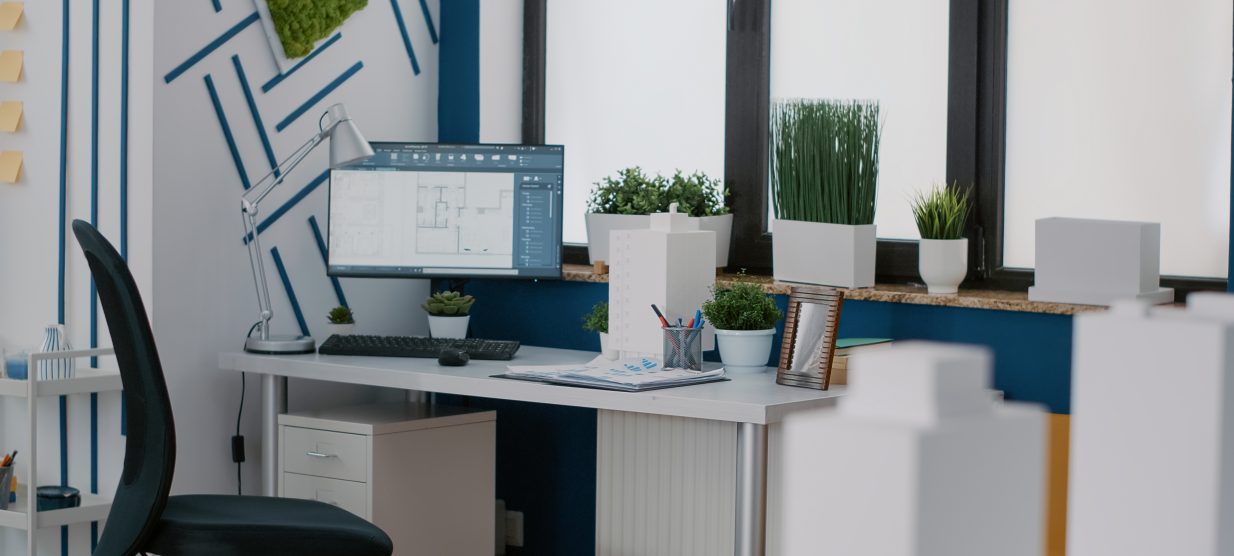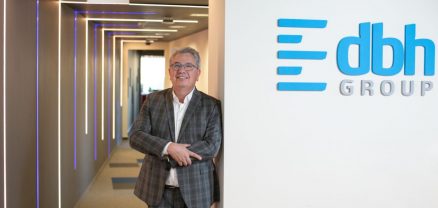The Evolution of Office Design: From Cubicles to Collaboration
Over the years, the way we work has undergone a profound transformation – and so has where we work. Office design has evolved from rigid, uniform cubicles to open, collaborative workspaces designed to foster community, flexibility, and innovation. This shift is not just a matter of aesthetics but is deeply rooted in cultural changes, technological advancements, and the needs of a modern workforce.
To understand this transformation, let’s take a closer look at the milestones of office design and explore how these changes are shaping the workplaces of today and tomorrow.
The Era of the Cubicle
For many, the image of mid-20th century offices conjures rows upon rows of identical cubicles. This style of office design was cemented in the late 1960s with the introduction of the “Action Office” by Herman Miller, which later evolved into the cubicle system we know today. The goal? To create a personal, yet flexible workspace where employees could focus without distraction.
While the original concept aimed to be innovative, its widespread adoption often resulted in soul-crushing monotony. Cubicles quickly became a symbol of corporate uniformity, with employees boxed into small, impersonal spaces that were more about optimizing floor plans than improving worker satisfaction.
The cubicle model aligned with the top-down, hierarchical structures of the time. Employees rarely needed collaborative spaces because most jobs involved individual tasks. However, as industries modernized and jobs began to demand creativity and teamwork, the flaws of this rigid design became glaringly apparent.
The Shift to Open and Collaborative Workspaces
The late 20th century saw a cultural shift in how businesses approached work. Creativity, innovation, and communication became the defining characteristics of success, especially for businesses in tech, media, and design. Suddenly, walling employees off in cubicles no longer made sense. Enter the era of open office layouts.
Open office designs became popular in the 1990s and early 2000s, influenced by companies like Apple, Pixar, and Google that sought to break down physical and psychological barriers between employees. These layouts eliminated cubicles in favor of larger, open spaces, where team members could interact freely. The idea was simple – open spaces equal open communication, which should, in theory, spark collaboration and innovation.
Businesses were also drawn to the efficiency of open layouts. Removing walls often meant more employees could fit into a single floor plan, making it a cost-effective solution. For many, this was seen as a win-win scenario.
The Role of Technology
Technological advancements played a pivotal role in reshaping office design. Computers became more compact, internet usage skyrocketed, and wireless connections eliminated the need for bulky equipment and excessive wiring. No longer tethered to one desk or one phone line, employees gained mobility – and office designs adapted to make better use of that flexibility.
Even meeting rooms underwent a tech-focused transformation, with digital whiteboards, video conferencing systems, and collaborative tools like Slack replacing the need for constant face-to-face updates. This allowed businesses to get creative with layout and space utilization, focusing on fostering a mobile and tech-driven work culture.
The Challenges of Open Offices
While open office layouts encouraged collaboration, they also introduced new challenges. The biggest complaint? Distractions. Employees found it hard to concentrate in environments filled with chatter, ringing phones, and general activity.
Additionally, privacy became a major concern. Whether it was confidential meetings or personal phone calls, the open office left employees without the spaces they needed for focused or sensitive conversations.
These drawbacks led to a reevaluation of open-office design in the 2010s, prompting the rise of “activity-based workspaces” and hybrid layouts.
The Rise of Flexibility and Collaborative Spaces
Today’s modern office design strikes a balance between the structured environment of cubicles and the freedom of open layouts. Key trends include flexible furniture arrangements, multi-functional spaces, and environments tailored to specific tasks.
- Activity-Based Workspaces: These designs feature zones for different work styles. Need a quiet area? Head to the focus pods. Want to brainstorm with a team? Grab a table in the collaborative hub. Activity-based designs acknowledge that no single layout fits every job or every employee.
- Hybrid Designs: Modern offices now combine open spaces with enclosed areas, offering a mix of collaborative and private work zones. Glass walls and partitions preserve an open feel while minimizing noise.
- Cozy and Home-Inspired Spaces: Furniture and decor are becoming less corporate and more comfortable – it’s not uncommon to see sofas, bean bags, and cozy corners in today’s offices. The goal is to make offices feel inviting, much like a second home.
- Desk Sharing and Hot Desking: With the rise of remote work, not all employees need a permanent desk. Hot desking –where employees book desks on an as-needed basis – has gained traction in saving space and boosting efficiency.
The Remote Work Revolution
The COVID-19 pandemic accelerated another major trend in office design – remote and hybrid work. With millions of employees working from home, businesses had to rethink the purpose of physical office spaces entirely.
Rather than being the default location for work, offices are increasingly becoming hubs for collaboration, team-building, and innovation. Companies are moving away from rigid layouts and instead designing spaces that encourage social interaction and team synergy for the days employees come in.
For instance, large meeting areas, breakout rooms, and modular setups are taking precedence over rows of desks. This reimagining of office space underscores its role as a place for connection rather than mere productivity.
The Future of Office Design
Office design continues to evolve in response to generational preferences, technological progress, and environmental sustainability.
Here are some trends we’re likely to see in the coming years:
- Biophilic Design: Integrating nature into workspaces through plants, natural light, and green materials to boost wellness and creativity.
- Smart Offices: IoT (Internet of Things) devices are enhancing efficiency with tools like smart lighting, automatic temperature adjustments, and digital room schedulers.
- Wellness-Centric Spaces: Expect more gyms, meditation zones, and fitness incentives built into office setups to support employee health and happiness.
- Remote-Friendly Offices: With remote work here to stay, expect office designs to include superior video conferencing setups and private booths for easy online meetings.
Ultimately, the future of office design is about flexibility, diversity, and putting people at the heart of the workplace.
Final Thoughts
The evolution from cubicles to collaboration-focused offices reflects more than a change in physical space – it represents a shift in how we value community, creativity, and connection at work. While no single design works for everyone, what’s certain is that modern offices are no longer just about productivity but also about fostering well-being, collaboration, and innovation.
By learning from each stage of office design evolution, businesses can create work environments that inspire, support, and adapt to the diverse needs of their teams. After all, the office of the future isn’t just where we work – it’s how we work together.

Do not hesitate to contact us
Get in touch, if you have any question
